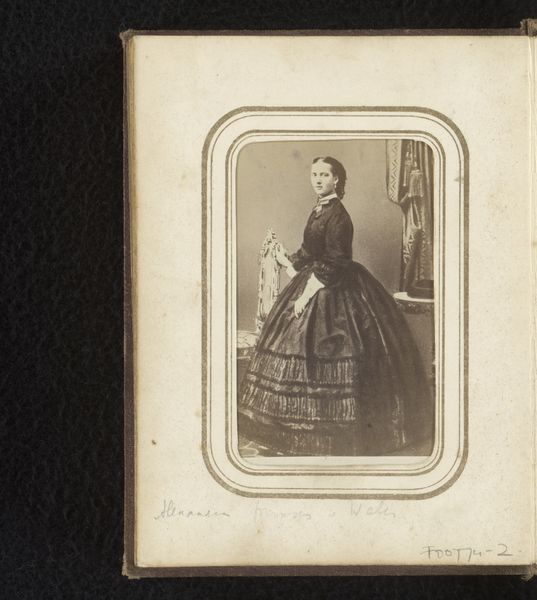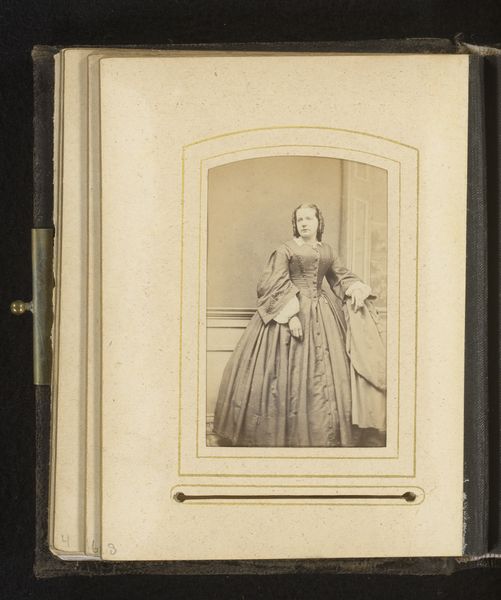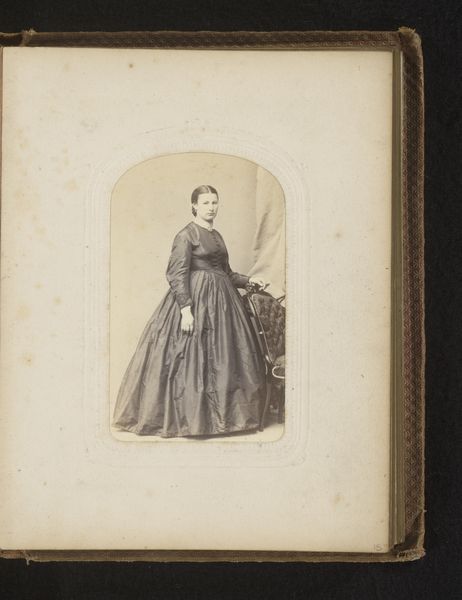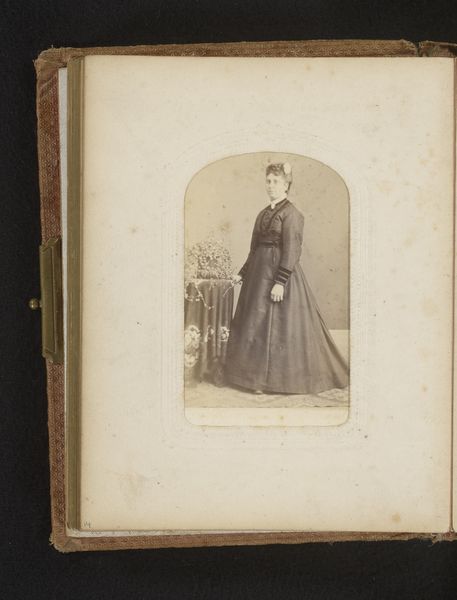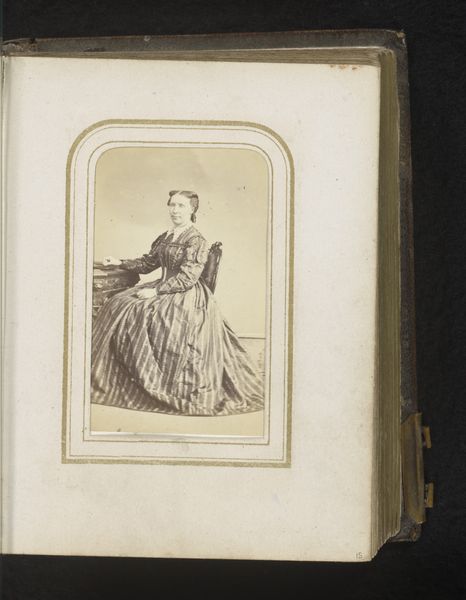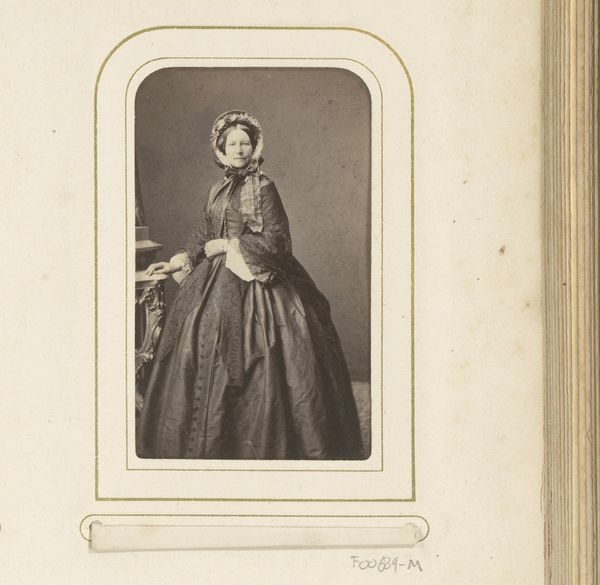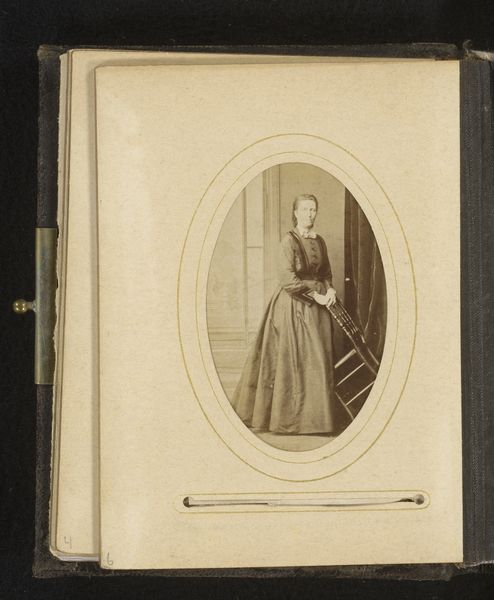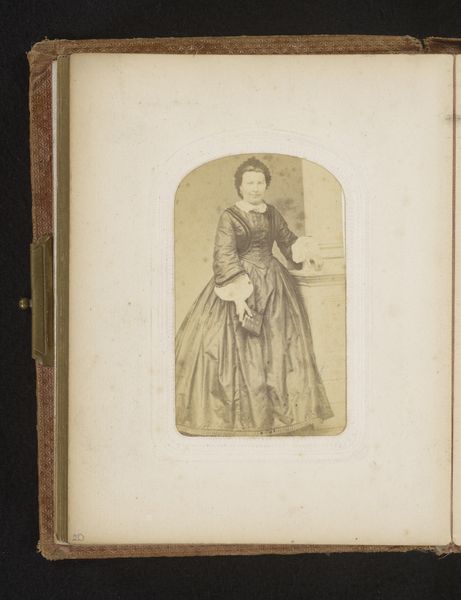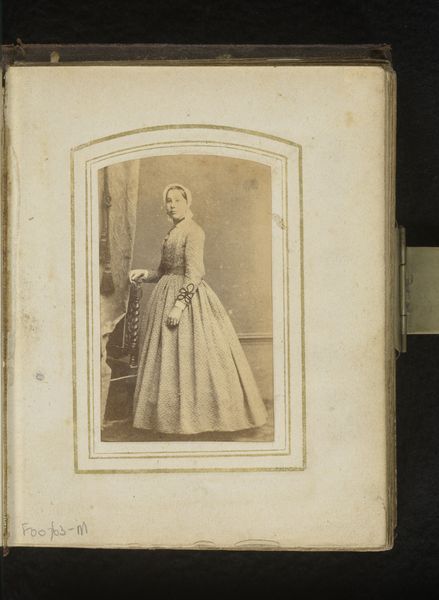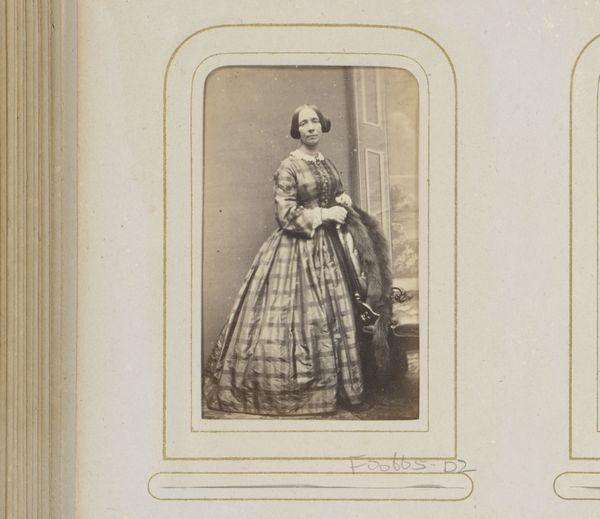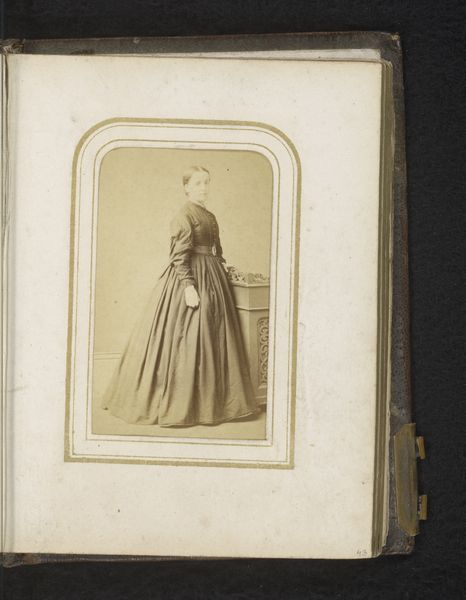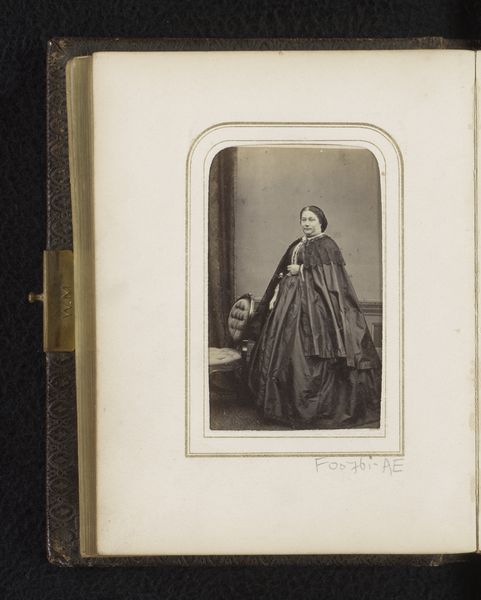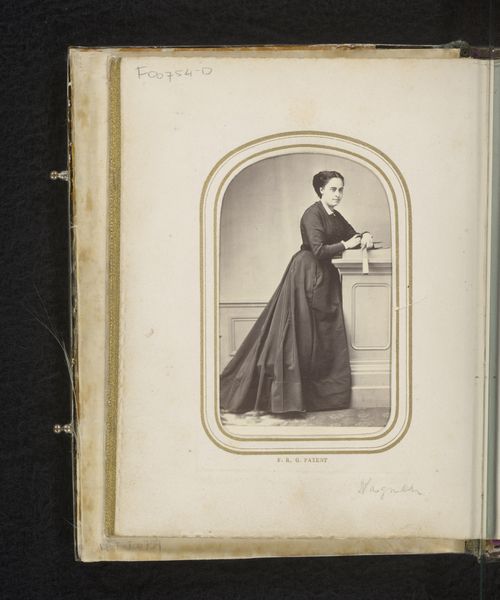
photography
#
portrait
#
photography
#
genre-painting
Dimensions: height 105 mm, width 64 mm
Copyright: Rijks Museum: Open Domain
Curator: The image before us is a photograph titled "Portret van een staande vrouw," dating from around 1860 to 1870, attributed to West, a photographer of that time. Editor: It has such a subdued presence, almost melancholic. The grey tones dominate, and the woman’s gaze, though direct, feels rather… distant. Curator: The medium itself contributes to that. The photographic process in that era, with its long exposure times, often resulted in a stillness that translated into a sense of solemnity. And let’s not forget the chemistry involved – the specific collodion or albumen processes influencing the image’s texture and tonal range. Editor: Right, the social and cultural context is important, too. Portrait photography was becoming more accessible during this period, offering a way for the middle class to emulate the aristocracy in having their likeness preserved. Think about the studios cropping up and how they democratized image making. Curator: Precisely. The woman’s dress itself tells a story of material culture: the fabrics available, the sewing techniques used, even the dye processes. That shimmering fabric shows some means and ability to engage in some level of style for a photograph, marking her social position within the visual economy. Editor: It's interesting to see that she is framed by architecture: interior moulding on the left and an external veranda through the window behind. The constructed environment places her. The photographer is also placing her for posterity, defining women’s social roles in that decade through this one standing portrait. Curator: This makes me also think of the labor involved, both the sitter’s and the photographer’s. Each required specific skills, time, and resources. I'm drawn to how something so seemingly straightforward represents this interplay between labor, technology, and social representation. Editor: Indeed. Looking at the historical arc, this piece shows that public portraiture reflects ever-shifting cultural and political norms of representing ourselves. Even though the means are new, we continually strive to define and position ourselves through image-making. Curator: Absolutely. Thinking about the production makes it much more potent for me. Editor: A fascinating insight indeed; this makes it far richer than a pretty photograph.
Comments
No comments
Be the first to comment and join the conversation on the ultimate creative platform.
